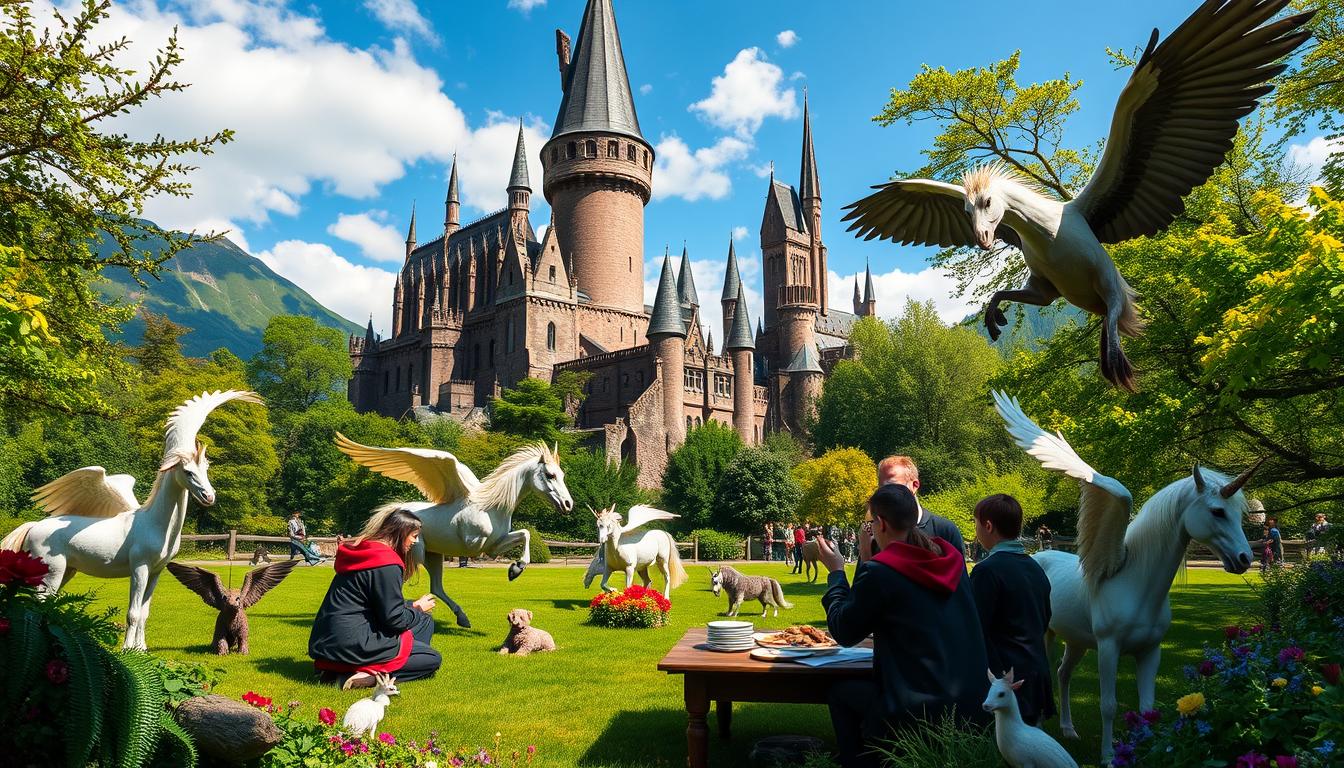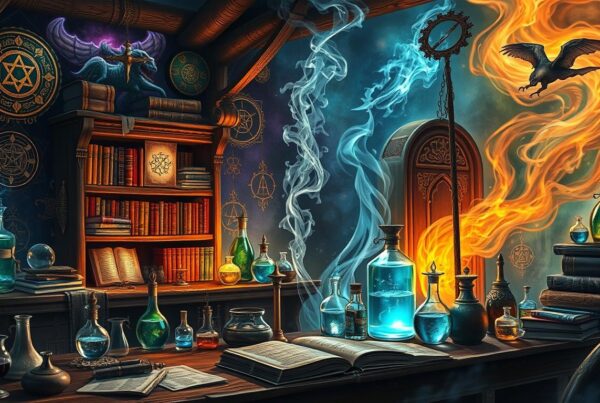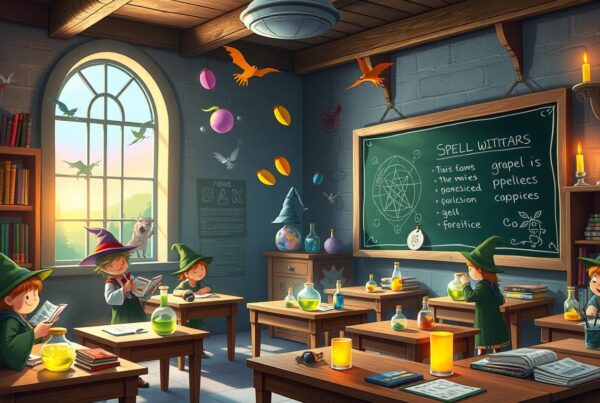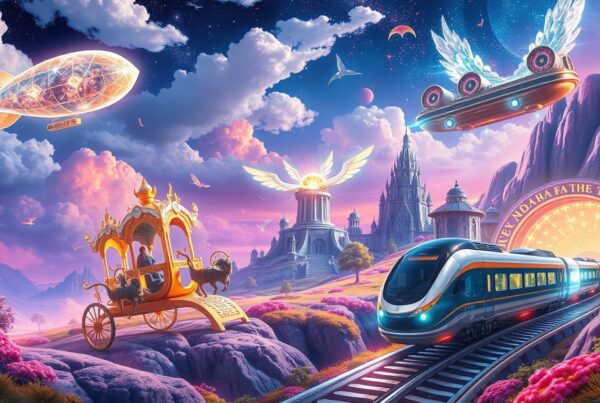In the enchanting world of wizarding education at Hogwarts School of Witchcraft and Wizardry, the Care of Magical Creatures class plays a crucial role in shaping young witches and wizards. This elective subject, available to students from their third year onwards, offers a fascinating glimpse into the diverse realm of magical creatures.
From the gentle Flobberworms to the majestic Hippogriffs, the Care of Magical Creatures curriculum covers a wide array of beings that inhabit the magical world. Students learn about the behavior, habitat, and proper care of these creatures, gaining valuable knowledge and skills that can lead to exciting careers as Magizoologists or in other fields involving magical creatures.
The Care of Magical Creatures class not only educates students about the wonders of the magical world but also instills in them a sense of responsibility and respect for all living beings. Through hands-on experiences and engaging lessons, students develop a deep appreciation for the diversity and importance of magical creatures in the wizarding world.
Key Takeaways
- Care of Magical Creatures is an elective subject available to Hogwarts students from their third year onwards.
- The class covers a wide range of magical creatures, from Flobberworms to Hippogriffs and Thestrals.
- Students learn about the behavior, habitat, and proper care of magical creatures.
- The class prepares students for careers as Magizoologists or in other fields involving magical creatures.
- Care of Magical Creatures instills a sense of responsibility and respect for all living beings in the magical world.
Introduction to Care of Magical Creatures Class
At Hogwarts School of Witchcraft and Wizardry, the Care of Magical Creatures class is an elective course available to students from their third year onwards. This hands-on learning experience provides students with the opportunity to interact with and learn about a wide range of magical creatures that inhabit the wizarding world.
Throughout the course, students gain a comprehensive understanding of the behaviors, habitats, diets, and proper handling techniques for various magical creatures. By taking a hands-on approach to learning, students develop a deeper appreciation for the diverse array of creatures they encounter and the important roles they play within the magical ecosystem.
Elective course for third-year students and above
As an elective course, Care of Magical Creatures is not mandatory for all students at Hogwarts. However, those who choose to enroll in the class from their third year onwards are given the chance to expand their knowledge and skills beyond the core subjects. This allows students to pursue their interests and passions while also preparing them for potential careers involving magical creatures.
Teaches about a wide range of magical creatures
The Care of Magical Creatures curriculum covers a diverse array of magical beings, including:
- Hippogriffs
- Unicorns
- Nifflers
- Bowtruckles
- Thestrals
- Blast-Ended Skrewts
- Flobberworms
- Salamanders
By studying these creatures in detail, students gain a well-rounded education that prepares them for encounters with magical creatures both within the wizarding world and beyond. The hands-on nature of the course allows students to develop practical skills and knowledge that can be applied in various settings, from daily life to future careers.
“You’re not dangerous at all, are you? You great ugly brute!”
– Draco Malfoy, upon first encountering a Hippogriff in Care of Magical Creatures class
With its engaging curriculum and focus on hands-on learning experiences, the Care of Magical Creatures class is an essential part of Hogwarts’ elective course offerings, providing third-year students and above with a unique opportunity to expand their understanding of the magical world and its inhabitants.
Prominent Professors of Care of Magical Creatures
Throughout the history of Hogwarts, the Care of Magical Creatures class has been led by a diverse array of professors, each bringing their unique expertise and passion for the subject. These dedicated educators have played a crucial role in shaping the minds of young witches and wizards, instilling in them a deep appreciation for the magical creatures that inhabit their world.
Silvanus Kettleburn
Professor Silvanus Kettleburn was a long-serving Care of Magical Creatures professor at Hogwarts, known for his adventurous spirit and hands-on approach to teaching. Despite sustaining numerous injuries throughout his career, including the loss of several limbs while handling dangerous creatures like Grindylows and Fire Crabs, Kettleburn remained passionate about his subject. He eventually retired in 1993 to spend more time with his remaining limbs.
Rubeus Hagrid
Rubeus Hagrid, the beloved half-giant gamekeeper of Hogwarts, took over as the Care of Magical Creatures professor in 1993. With his extensive knowledge of magical creatures and his gentle, nurturing nature, Hagrid quickly became a favorite among students. However, his unconventional teaching methods and penchant for introducing potentially dangerous creatures to his classes occasionally led to controversy, such as when Draco Malfoy was injured by a Hippogriff named Buckbeak.
“I am what I am, an’ I’m not ashamed. ‘Never be ashamed,’ my ol’ dad used ter say, ‘there’s some who’ll hold it against you, but they’re not worth botherin’ with.'” – Rubeus Hagrid
Wilhelmina Grubbly-Plank (substitute)
Professor Wilhelmina Grubbly-Plank served as a substitute Care of Magical Creatures teacher during the 1994-1995 school year when Hagrid was temporarily absent. A skilled and experienced educator, Grubbly-Plank provided students with a more structured and traditional learning experience, focusing on creatures such as Bowtruckles and Unicorns. Her no-nonsense approach and expertise in the field made her a valuable asset to the Hogwarts faculty.
| Professor | Years Taught | Notable Creatures Taught |
|---|---|---|
| Silvanus Kettleburn | Before 1993 | Grindylows, Fire Crabs |
| Rubeus Hagrid | 1993-1997 | Hippogriffs, Thestrals, Blast-Ended Skrewts |
| Wilhelmina Grubbly-Plank | 1994-1995 (substitute) | Bowtruckles, Unicorns |
Classroom Locations and Settings
The Care of Magical Creatures classroom at Hogwarts offers a unique and immersive learning experience for students. Unlike traditional indoor classrooms, the majority of Care of Magical Creatures lessons take place outdoors, allowing students to interact with and observe magical creatures in their natural habitats.
Most Care of Magical Creatures classes are held outside Hagrid’s hut, situated on the expansive Hogwarts grounds. Hagrid’s hut serves as a central hub for the subject, providing a convenient location for students to gather before venturing out to study various magical creatures.
The class gathered on the edge of the Forbidden Forest, where Professor Hagrid stood waiting for them next to a long trestle table laden with twigs.
In addition to the area surrounding Hagrid’s hut, some Care of Magical Creatures lessons occasionally take place within the Forbidden Forest itself. For example, during Harry Potter’s fifth year, students ventured into the forest to study Thestrals, mysterious winged horses visible only to those who have witnessed death.
The outdoor setting of the Care of Magical Creatures classroom enables students to gain hands-on experience with magical creatures, observing their behaviors and learning how to properly care for them in their natural environments. This practical approach to learning is essential for students who wish to pursue careers involving magical creatures, such as Magizoologists or dragon keepers.
While the open-air nature of the Care of Magical Creatures classroom presents unique challenges, such as inclement weather or the unpredictable behavior of certain creatures, it also provides an unparalleled opportunity for students to immerse themselves in the fascinating world of magical beasts and develop a deeper understanding of their roles within the wizarding world.
Curriculum Overview: Third Year
The third-year curriculum at Hogwarts introduces students to a fascinating array of magical creatures through the Care of Magical Creatures elective course. This hands-on class allows young witches and wizards to interact with and learn about various beings that inhabit the magical world. From the regal Hippogriffs to the seemingly mundane Flobberworms, the course offers a diverse range of creatures for students to study.
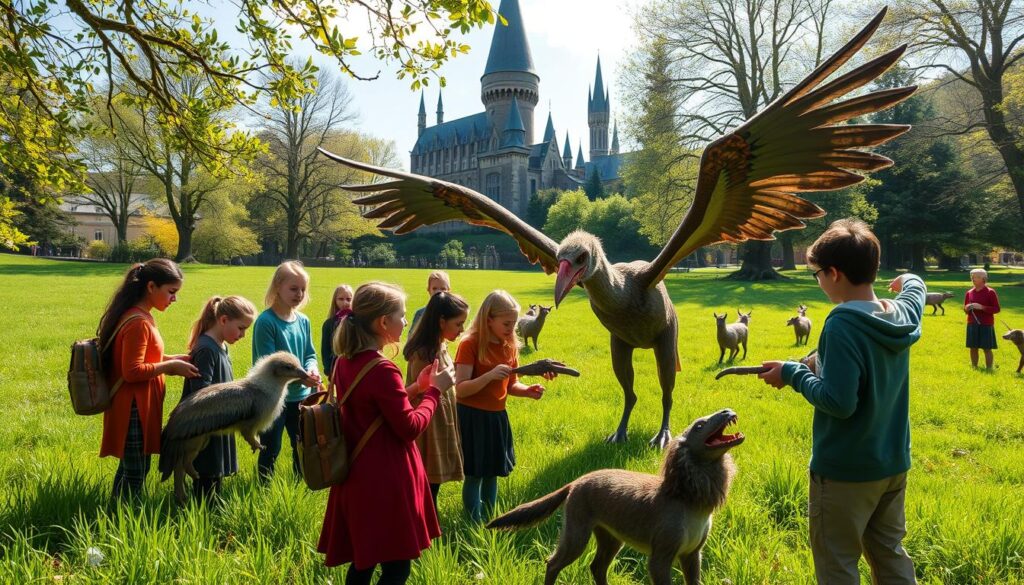
Hippogriffs
One of the most memorable lessons in the third-year Care of Magical Creatures curriculum revolves around Hippogriffs. These majestic, eagle-horse hybrids are proud creatures that require a specific approach when interacting with them. Students learn the importance of maintaining eye contact, bowing, and waiting for the Hippogriff to bow in return before approaching. This lesson culminates in a practical session where students have the opportunity to pet and even ride the Hippogriffs, as demonstrated by Harry Potter’s successful encounter with Buckbeak.
Flobberworms
Not all creatures covered in the third-year curriculum are as exciting as Hippogriffs. Flobberworms, for instance, are rather dull creatures that primarily involve feeding them lettuce. These lessons can be quite tedious, as overfeeding the Flobberworms can lead to their untimely demise. Despite their lack of magical abilities, Flobberworms serve as an introduction to the more mundane aspects of caring for magical creatures.
Salamanders
Fire-dwelling Salamanders are another intriguing creature studied by third-year students. These small, lizard-like beings thrive in flames and can only survive outside of the fire for a limited time. Lessons involving Salamanders often coincide with more somber events, such as Hagrid’s depression over Buckbeak’s impending execution. Nevertheless, the study of Salamanders provides students with valuable knowledge about the diverse range of magical creatures and their unique habitats.
Through the exploration of creatures like Hippogriffs, Flobberworms, and Salamanders, the third-year Care of Magical Creatures curriculum lays a foundation for students to appreciate and understand the complexities of the magical world. As they progress through their education, this knowledge will prove invaluable in their future encounters with even more fascinating and challenging beings.
Curriculum Overview: Fourth Year
In their fourth year at Hogwarts, students delve deeper into the Care of Magical Creatures curriculum, encountering a variety of fascinating creatures. At the age of 14 to 15, these young witches and wizards are ready to take on more challenging lessons and expand their knowledge of the magical world.
One of the most memorable creatures introduced in the fourth-year curriculum is the Blast-Ended Skrewt. These unique and potentially dangerous creatures are raised as a year-long project, giving students hands-on experience in caring for and studying magical beings. Blast-Ended Skrewts are thought to be an illegal cross between Manticores and Fire Crabs, adding an element of intrigue to the lessons.
Another creature that captures the attention of fourth-year students is the Niffler. These adorable, treasure-seeking creatures are introduced in a practical lesson where students must search for leprechaun gold. The lesson not only teaches students about the Nifflers’ unique abilities but also provides an engaging and interactive learning experience.
“Nifflers are gentle by nature and may even be affectionate towards their owners, but they can wreak havoc if kept as a pet.”
Unicorns, a staple of the magical world, are also covered in the fourth-year curriculum. Lessons focus on both adult Unicorns and their foals, with a notable difference in class dynamics. Adult Unicorn lessons tend to be girl-dominant, as these majestic creatures are more trusting of females. In contrast, Unicorn foals are more accepting of boys, allowing for a more balanced class participation.
| Creature | Lesson Focus | Unique Characteristics |
|---|---|---|
| Blast-Ended Skrewt | Year-long project | Potentially illegal cross between Manticores and Fire Crabs |
| Niffler | Practical lesson searching for leprechaun gold | Treasure-seeking abilities, can be affectionate but destructive |
| Unicorn (Adult) | Girl-dominant lessons | More trusting of females |
| Unicorn (Foal) | More balanced class participation | More accepting of boys |
Throughout the fourth year, students build upon the foundation laid in their third year, tackling more advanced creatures and lessons. This progression prepares them for the challenges that lie ahead in their magical education and future careers involving magical creatures.
Curriculum Overview: Fifth Year
As students progress through their fifth year at Hogwarts, the Care of Magical Creatures curriculum becomes more challenging and focused on preparing them for their upcoming O.W.L. examinations. The fifth-year curriculum introduces students to a diverse array of magical creatures, each with its own unique characteristics and care requirements.
Bowtruckles
One of the creatures studied in the fifth year is the Bowtruckle, a small, twig-like creature that guards wand-wood trees. Students learn about the Bowtruckle’s habitat, diet, and defensive mechanisms. Classwork and homework involve sketching these creatures to help students identify and understand their unique features.
Thestrals
Thestrals, the mysterious winged horses visible only to those who have witnessed death, are another topic covered in the fifth-year curriculum. Although the lesson on Thestrals is mostly impeded by Dolores Umbridge during Harry Potter’s fifth year, students still learn about their appearance, abilities, and the myths surrounding them.
Knarls and other O.W.L. preparation creatures
To ensure students are well-prepared for their O.W.L. exams, Professor Grubbly-Plank mentions that she will cover various other creatures, including:
- Porlocks
- Kneazles
- Crups
- Knarls
By studying these creatures in detail, students gain a comprehensive understanding of their characteristics, behaviors, and the appropriate care techniques required for each species.
| Creature | Key Characteristics | O.W.L. Preparation Focus |
|---|---|---|
| Bowtruckles | Small, twig-like appearance; guards wand-wood trees | Sketching and identifying unique features |
| Thestrals | Winged horses; visible only to those who have witnessed death | Understanding appearance, abilities, and myths |
| Knarls and other creatures | Various magical creatures with unique characteristics | Comprehensive study of behaviors and care techniques |
By focusing on these challenging creatures and dedicating time to thorough study, fifth-year students at Hogwarts are well-equipped to tackle their O.W.L. examinations in Care of Magical Creatures and demonstrate their mastery of the subject.
The Role of Magical Creatures in Hogwarts’ Curriculum
The Care of Magical Creatures curriculum plays a vital role in educating students about the diverse creatures that inhabit the magical world. Through this course, students gain a deeper understanding and appreciation for the complexity and beauty of the wizarding world’s fauna.
By studying magical creatures, students develop the knowledge and skills necessary to interact with and care for these fascinating beings. The hands-on experience and theoretical knowledge acquired in the Care of Magical Creatures class prepares students for potential careers involving magical creatures, such as Magizoology.
Teaching Students About the Magical World
The Care of Magical Creatures curriculum exposes students to a wide range of creatures, from the gentle and friendly to the dangerous and misunderstood. By learning about these creatures’ habitats, behaviors, and unique abilities, students gain a more comprehensive understanding of the magical world and its inhabitants.
Preparing Students for Careers Involving Magical Creatures
The Care of Magical Creatures course lays the foundation for students interested in pursuing careers related to magical creatures. Notable alumni, such as Newt Scamander and his grandson Rolf, have demonstrated the importance of this subject in their successful careers as Magizoologists.
Through the course, students develop essential skills, such as handling techniques, feeding practices, and habitat maintenance, which are crucial for working with magical creatures in various professions. This hands-on experience, combined with theoretical knowledge, equips students with the necessary tools to excel in careers involving the care, study, and protection of magical creatures.
| Subject | Years Taught | Elective/Required |
|---|---|---|
| Care of Magical Creatures | Third to Fifth Year | Elective |
| Herbology | First to Fifth Year | Required |
| Potions | First to Fifth Year | Required |
| Defense Against the Dark Arts | First to Fifth Year | Required |
In conclusion, the Care of Magical Creatures curriculum is an essential component of Hogwarts’ education, as it not only teaches students about the magical world but also prepares them for future careers involving magical creatures. By providing a comprehensive understanding of these creatures and their roles in the wizarding world, this course ensures that students are well-equipped to become responsible and knowledgeable members of the magical community.
Required Textbooks and Materials
To ensure a comprehensive education in the Care of Magical Creatures, Hogwarts students rely on a selection of required textbooks that provide essential information about the various creatures they will encounter throughout the course. These textbooks serve as valuable references, guiding students as they learn to understand, care for, and interact with magical creatures.
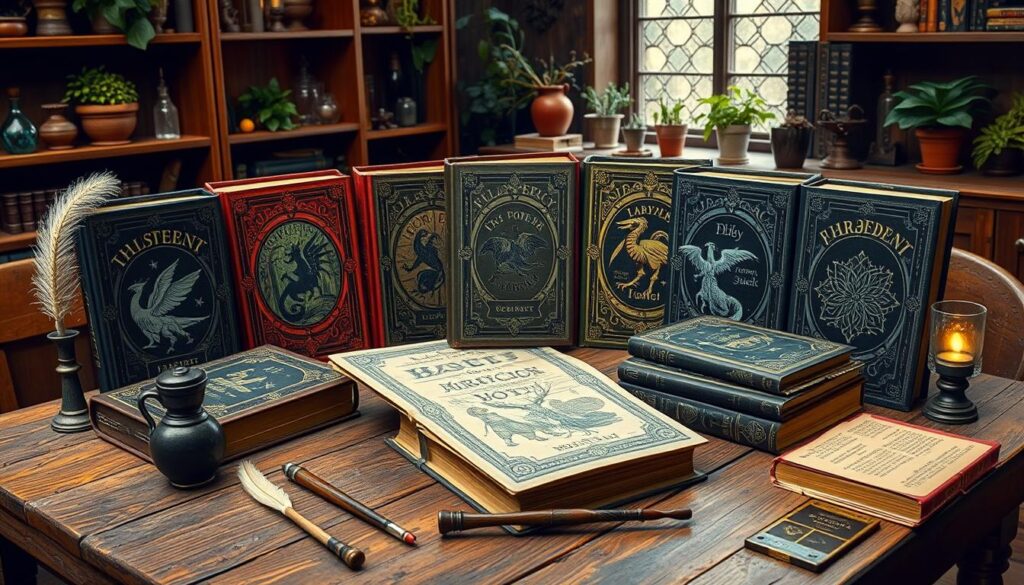
The Monster Book of Monsters by Edwardus Lima
During Professor Hagrid’s tenure as the Care of Magical Creatures instructor, third-year students are required to purchase The Monster Book of Monsters by Edwardus Lima. This peculiar book has a reputation for being quite lively, as it attempts to bite anyone who comes near it unless they stroke its spine to calm it down. Despite its aggressive nature, The Monster Book of Monsters contains crucial information about a wide variety of magical creatures, making it an indispensable resource for students.
Fantastic Beasts and Where to Find Them by Newt Scamander
Another essential textbook used in the Care of Magical Creatures class is Fantastic Beasts and Where to Find Them, written by the renowned Magizoologist Newt Scamander. This comprehensive guide provides detailed information about numerous magical creatures, including their habitats, diets, and unique characteristics. Scamander’s extensive knowledge and experience with magical creatures make this book an authoritative source for students eager to expand their understanding of the subject.
| Textbook | Author | Required for |
|---|---|---|
| The Monster Book of Monsters | Edwardus Lima | Third-year students during Professor Hagrid’s tenure |
| Fantastic Beasts and Where to Find Them | Newt Scamander | All Care of Magical Creatures students |
By studying these required textbooks, Hogwarts students gain a solid foundation in the Care of Magical Creatures, preparing them for the challenges and wonders they will face as they explore the magical world and potentially pursue careers involving magical creatures.
O.W.L. Examination and Grades
In their fifth year at Hogwarts, students take the Ordinary Wizarding Level (O.W.L.) examination in Care of Magical Creatures. The Care of Magical Creatures O.W.L. is a crucial assessment that determines a student’s proficiency in the subject and their eligibility to pursue related careers. The exam consists of both written and practical components, with the practical examination taking place on the lawn near the Forbidden Forest.
During the Care of Magical Creatures O.W.L. practical examination, students are required to demonstrate their knowledge and skills in handling various magical creatures. Tasks may include correctly identifying a Knarl hidden among hedgehogs, properly handling a Bowtruckle, feeding and cleaning a Fire Crab without sustaining burns, and selecting the appropriate diet for a sick Unicorn. Success in these tasks is essential for achieving a passing grade.
- Outstanding (O)
- Exceeds Expectations (E)
- Acceptable (A)
- Poor (P)
- Dreadful (D)
- Troll (T)
Students who achieve a passing grade of Outstanding, Exceeds Expectations, or Acceptable in their Care of Magical Creatures O.W.L. are eligible to continue the subject at the N.E.W.T. level. Many careers involving magical creatures require a minimum of an O.W.L. in the subject, making it crucial for students to perform well in the examination.
| Grade | Description | N.E.W.T. Eligibility |
|---|---|---|
| Outstanding (O) | Highest grade, indicating exceptional performance | Yes |
| Exceeds Expectations (E) | Demonstrates a strong understanding of the subject | Yes |
| Acceptable (A) | Satisfactory performance, meeting the minimum requirements | Yes |
| Poor (P) | Below average performance, may require repeating the exam | No |
| Dreadful (D) | Unsatisfactory performance, indicating a lack of understanding | No |
| Troll (T) | Lowest grade, indicating a complete failure in the subject | No |
The O.W.L.s are important exams that can determine a student’s future. It’s crucial to prepare well and do your best, especially in subjects like Care of Magical Creatures, where practical skills are essential.
Students who do not achieve a passing grade in their Care of Magical Creatures O.W.L. may need to reevaluate their career goals or consider retaking the examination to improve their chances of pursuing their desired path.
Notable Students and Their Achievements
Throughout the history of Hogwarts, the Care of Magical Creatures class has inspired and shaped the lives of many notable students. These individuals have not only excelled in their studies but have also made significant contributions to the magical world, particularly in the field of Magizoology.
Harry Potter, Ron Weasley, and Hermione Granger
The trio of Harry Potter, Ron Weasley, and Hermione Granger are among the most notable students to have attended Care of Magical Creatures classes. During their time at Hogwarts, they actively participated in the course, with Hermione often assisting Professor Rubeus Hagrid in improving his teaching methods. Their experiences in the class played a crucial role in their adventures, as they encountered various magical creatures throughout their journey, such as Hippogriffs, Thestrals, and even a dragon.
Luna Lovegood and Rolf Scamander
Another remarkable student who took Care of Magical Creatures was Luna Lovegood. Luna’s unique perspective and open-mindedness allowed her to appreciate and understand magical creatures in a way that few others could. After graduating from Hogwarts, Luna went on to marry Rolf Scamander, the grandson of the renowned Magizoologist Newt Scamander.
Together, Luna and Rolf became celebrated Magizoologists, building upon the legacy of Newt Scamander and their own experiences in the Care of Magical Creatures class. Their work has greatly contributed to the understanding and conservation of magical creatures, earning them recognition and respect within the wizarding community.
| Student | Notable Achievements |
|---|---|
| Harry Potter | – Youngest Seeker in Gryffindor Quidditch team – Triwizard Tournament winner – Youngest Auror in history |
| Ron Weasley | – Assisted in defeating Lord Voldemort – Became an Auror |
| Hermione Granger | – Assisted in defeating Lord Voldemort – Became Minister for Magic |
| Luna Lovegood | – Renowned Magizoologist – Co-author of “Fantastic Beasts and Where to Find Them” (revised edition) |
| Rolf Scamander | – Renowned Magizoologist – Grandson of Newt Scamander |
The success stories of these notable students demonstrate the lasting impact of the Care of Magical Creatures curriculum on their lives and careers. Their achievements serve as an inspiration to future generations of Hogwarts students, encouraging them to pursue their passions and make a difference in the magical world.
Controversies and Challenges in Care of Magical Creatures
While the Care of Magical Creatures class at Hogwarts provided students with valuable hands-on experience and knowledge, it was not without its share of controversies and challenges over the years. One notable incident occurred during Professor Rubeus Hagrid’s first year teaching the course.
Draco Malfoy’s Injury by Buckbeak
In a lesson introducing third-year students to Hippogriffs, a proud and easily offended magical creature, Draco Malfoy disregarded Hagrid’s warnings and insulted the Hippogriff named Buckbeak. The creature retaliated, injuring Malfoy’s arm. This incident led to a legal case against Buckbeak and put Hagrid’s teaching position in jeopardy, highlighting the risks associated with handling certain magical creatures.
Hagrid’s Unique Teaching Style and Creature Choices
Hagrid’s enthusiasm for magical creatures, particularly those considered dangerous or poorly understood, often led to concerns about student safety and the legality of the creatures being studied. In his second year of teaching, Hagrid introduced fourth-year students to Blast-Ended Skrewts, a species of illegally bred creatures that caused minor injuries and raised eyebrows among some Hogwarts staff members and the wizarding community.
| Creature | Ministry of Magic Classification | Controversy |
|---|---|---|
| Hippogriff (Buckbeak) | XXX | Injured Draco Malfoy, leading to legal case |
| Blast-Ended Skrewt | Unclassified (illegally bred) | Raised concerns about student safety and legality |
Despite these controversies and challenges, Hagrid remained committed to providing students with a comprehensive education in the care of magical creatures. His hands-on approach, while unconventional at times, aimed to prepare students for the wide array of creatures they might encounter in the wizarding world.
“I’ve bin doin’ some readin’. Reckon I can look after ’em meself when I get the hang of it.” – Rubeus Hagrid, on raising Blast-Ended Skrewts
As the Care of Magical Creatures curriculum evolved, the wizarding community continued to grapple with the balance between educating students about these fascinating creatures and ensuring their safety and well-being.
Conclusion
The Care of Magical Creatures curriculum at Hogwarts School of Witchcraft and Wizardry plays a crucial role in the wizarding education of young witches and wizards. Through a combination of hands-on lessons and theoretical knowledge, students gain a deeper understanding and appreciation for the diverse creatures that inhabit the magical world. This course is essential in preparing students for potential careers involving magical creatures and helps them develop the skills necessary to care for and work with these fascinating beings.
Despite the challenges and controversies that have arisen over the years, such as Draco Malfoy’s injury by Buckbeak and Rubeus Hagrid’s unique teaching style and creature choices, the Care of Magical Creatures class remains a vital component of a well-rounded wizarding education. It enriches the lives of students and fosters a sense of respect and wonder for the magical world around them.
In conclusion, the Care of Magical Creatures curriculum at Hogwarts is of utmost importance in shaping the minds and hearts of young witches and wizards. It not only imparts valuable knowledge and skills but also instills a deep appreciation for the magical world and its inhabitants. As students continue to explore and learn about the diverse creatures that share their world, they become better equipped to navigate and contribute to the wizarding society.
